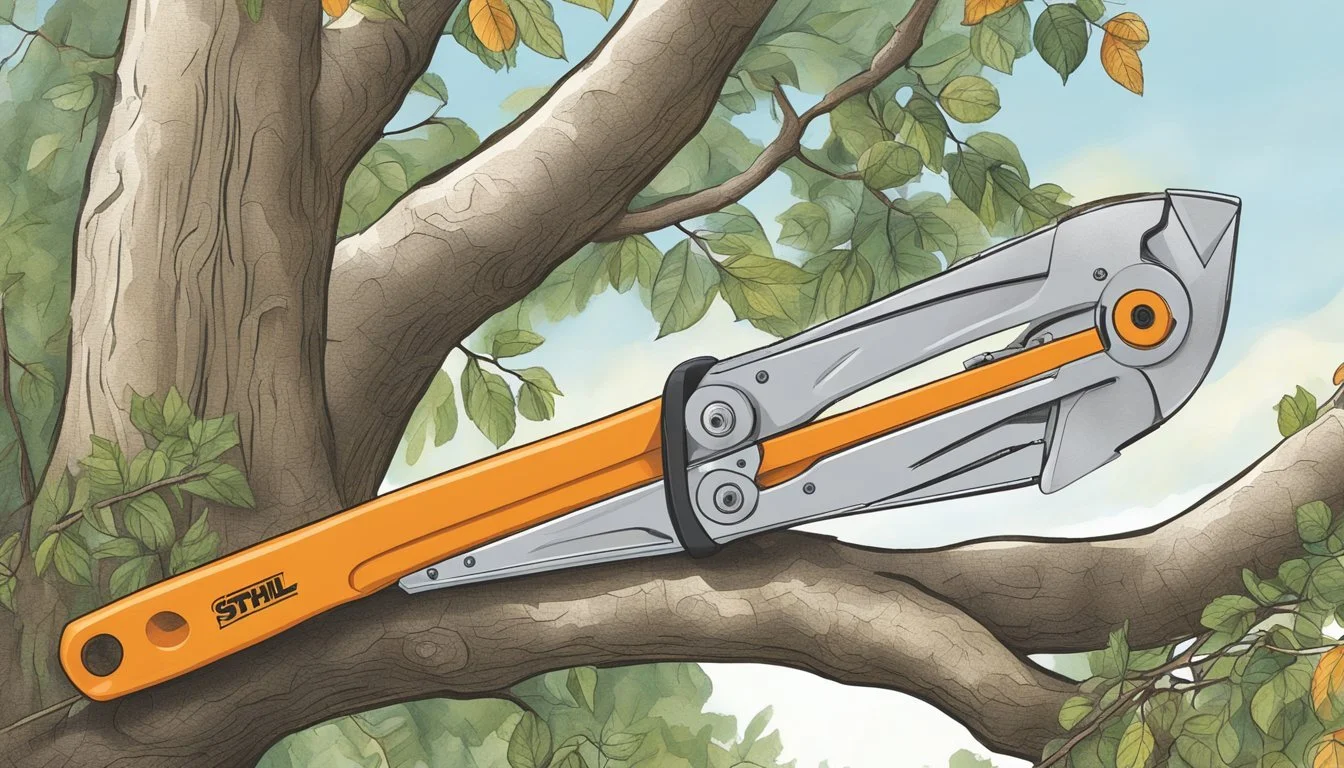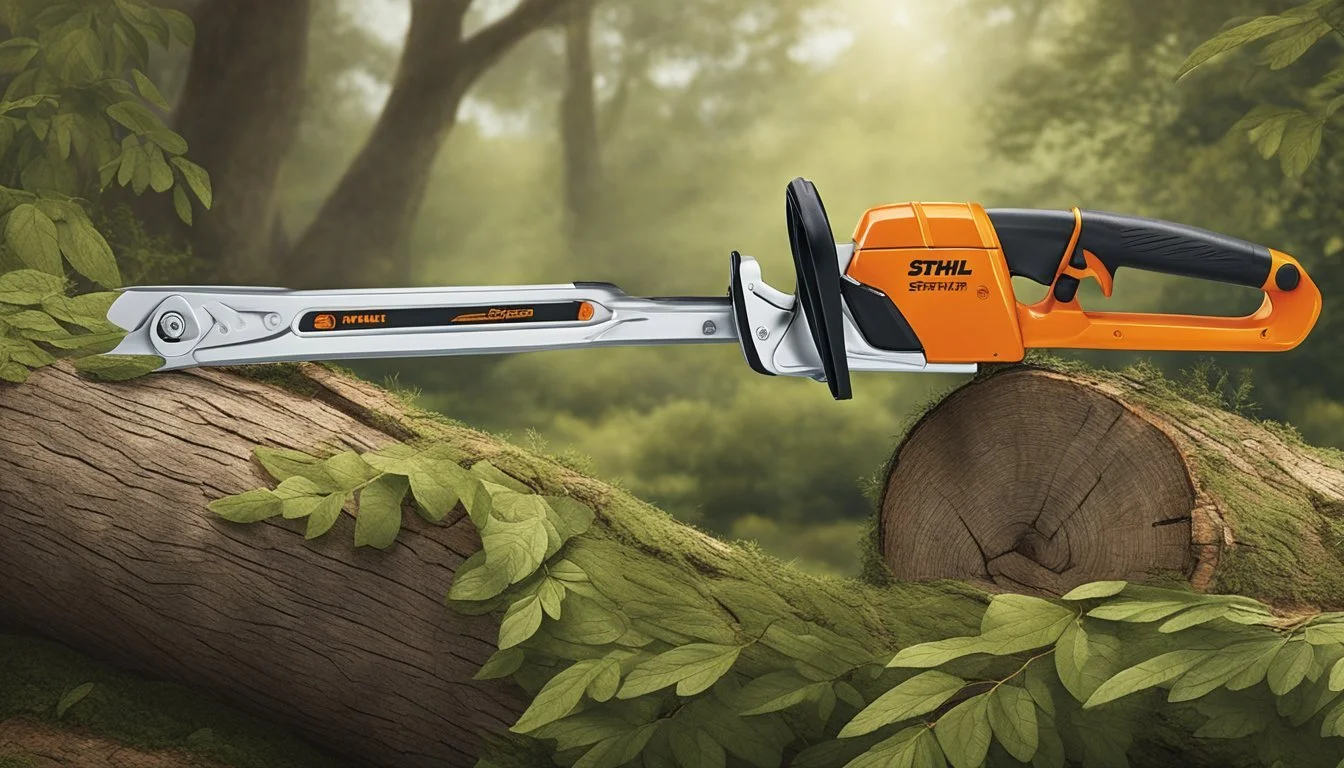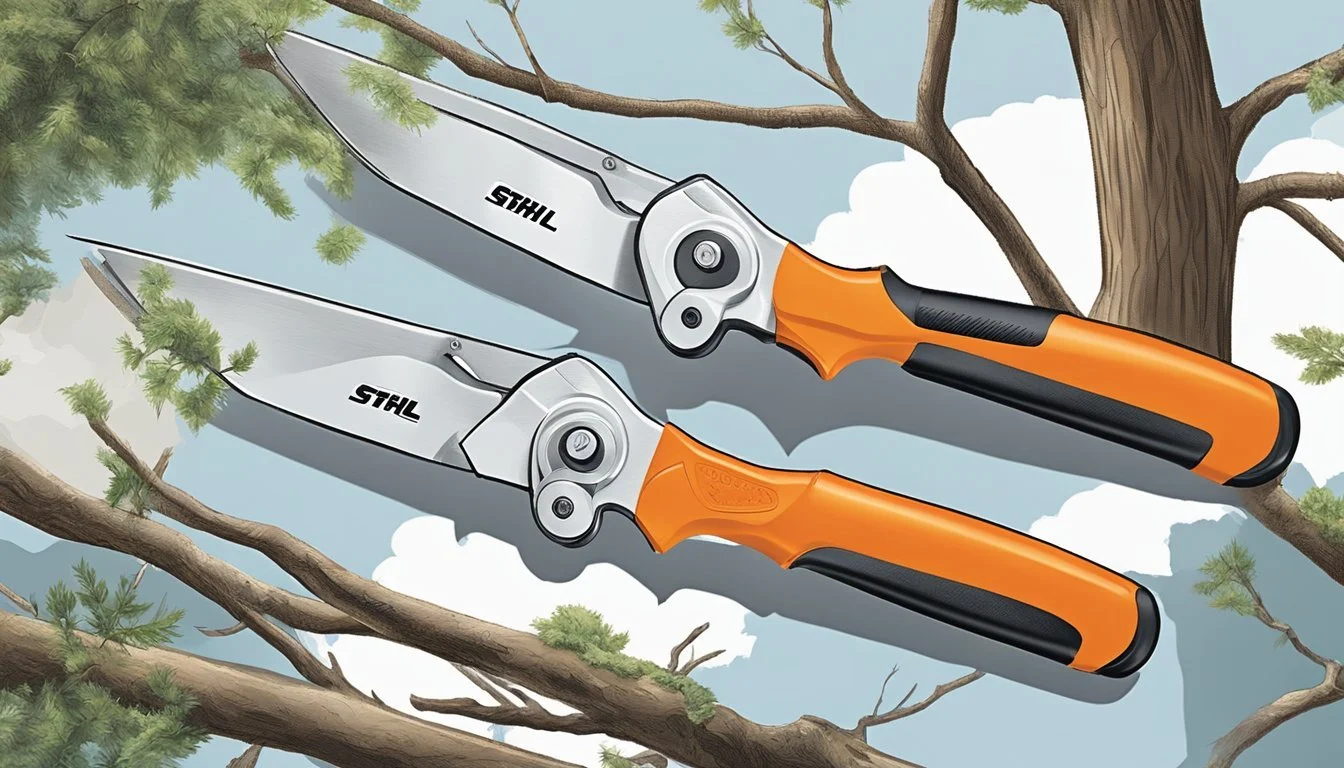The Best Stihl Loppers for Effortlessly Cutting Thick Branches
Your Homestead Pruning Guide
Maintaining a thriving homestead requires efficient and effective tools, and when it comes to managing tree growth and ensuring the health of your plants, a robust pair of loppers is indispensable. Stihl, known for its high-quality gardening and landscaping tools, offers a range of loppers designed to tackle the challenging task of cutting through thick branches. These loppers are an essential tool for gardeners looking to perform precise pruning with minimal effort.
A lopper is a type of scissors used for pruning, cutting branches away from trees and bushes, ensuring a clean and healthy cut that promotes plant growth. Among the Stihl range, some loppers feature longer handles for extended reach and better leverage, ideal for those higher, hard-to-reach branches. The build quality of these tools, including aircraft aluminum handles, confirms their durability and suitability for frequent, heavy-duty use.
For homesteaders, finding a lopper that combines comfort with functionality is key to reducing strain during lengthy gardening sessions. Stihl loppers often incorporate specially designed cutting heads, ergonomically shaped grips, and lightweight construction, ensuring that the task of cutting even the thickest branches is as efficient and comfortable as possible. With a Stihl lopper in hand, gardeners are equipped to keep their homestead's foliage in check, shaping their landscapes with precision and ease.
Understanding Loppers
Loppers are essential tools for cleanly cutting thick branches, with features that influence their performance and suitability for various tasks.
Anatomy of a Lopper
A lopper consists of two main parts: the handle and the head. The handle offers leverage and can range from short for close work to long for increased cutting power and reach. The head includes the blade, which does the actual cutting, and a counter-blade or hook that holds the branch in place.
Types of Loppers
There are two primary types of loppers that gardeners and homesteaders should be familiar with:
Bypass Loppers: These are the most common type, functioning like scissors with two blades "passing by" each other to make a clean cut. Ideal for living wood and precise cuts.
Anvil Loppers: These feature a single sharp blade that closes against a flat anvil-like surface, suitable for cutting through dead wood or making rough cuts where precision is less critical.
Cutting Mechanisms
Loppers employ various mechanisms to amplify cutting force, reduce effort, or enhance precision:
Standard Loppers: These rely on the user's brute force to make cuts; their cutting capacity is typically up to 1.5 inches.
Ratcheting Loppers: These have a mechanism that clicks and holds after each squeeze, allowing the user to release and squeeze again for increased pressure, ideal for cutting through thicker branches.
Gear-Driven Loppers: Featuring a gear or compound lever system, these loppers magnify the force applied by the user, making it easier to cut through thick branches without as much effort.
By considering the blade quality, mechanism, and cutting capacity, users can select a lopper that is tailored to their specific needs, enhancing both efficiency and safety on the task at hand.
Features of High-Quality Loppers
When selecting high-quality loppers, gardeners should focus on blade material, handle comfort, and cutting capacity. These features define the tool's performance and longevity, especially in dealing with thick branches.
Blade Material and Sharpness
Blade Material: The ideal loppers feature blades made of carbon steel which ensures durability and a sharp edge. A low-friction coating, such as titanium, minimizes sap buildup and enhances the blade's resistance to wear and corrosion.
Sharpness: A precision-ground edge allows for cleaner cuts, essential for the health of the plants and ease of use. Loppers that maintain their sharpness over time ensure sustainable use and reduce the effort required in cutting.
Handle Comfort and Design
Handle Design: Ergonomic handles are crucial for comfort and control. Telescoping handles offer an advantage for reaching taller branches, while nonslip grips provide added safety.
Comfort: The handles should be lightweight, typically made from materials like aircraft aluminum for ease of carrying without sacrificing strength. Ergonomic handle designs reduce fatigue, allowing for extended use.
Cutting Power and Capacity
Cutting Capacity: A high-quality lopper can handle a cutting capacity of up to 2 inches, catering to robust thick branches. The cutting head design significantly affects this capability, enabling a clean, efficient cut.
Cutting Power: Features like compound action or PowerGear technology amplify cutting force, reducing the physical effort required by the user. Enhanced cutting power is fundamental when working with tough, resilient wood.
In conclusion, the selection of Stihl loppers with the above features will ensure that gardeners have a reliable tool for maintaining their homestead landscapes efficiently and effectively.
Selecting the Right Lopper for Your Needs
When choosing Stihl loppers for garden work, it's essential to consider the types of branches to be cut, as well as the convenience features that will make the job easier. The right lopper can mean a swift, clean cut through live wood or dead branches with minimal effort.
Bypass Vs. Anvil Loppers
Bypass loppers are akin to scissors, with two blades "passing by" each other to make a cut. They are preferable for making precise, clean cuts on live wood without crushing plant fibers. Stihl's bypass loppers generally feature a curved blade for optimal cutting efficiency.
Ideal for: Live wood, delicate plants, precise pruning
Cutting capacity: Usually up to 2 inches
Blade materials: Often coated with non-stick material to resist sap and debris
In contrast, anvil loppers have a single straight blade that closes against a flat edge, which is the anvil. They are more suited to cutting dead wood or hard, thick branches where precision is less of a concern.
Ideal for: Dead wood, thick branches
Cutting capacity: Often larger than bypass loppers
Blade materials: Durable, often with a hardened cutting edge
Manual Vs. Ratchet Loppers
Stihl loppers can either be manual or equipped with a ratchet mechanism.
Manual loppers require consistent force throughout the cut and are generally lighter and simpler in design. They rely heavily on the sharpness of the blade and the strength of the user. For branches that are easily reachable and not overly thick, manual loppers offer an efficient solution.
Grip: Ergonomic to reduce hand fatigue
Length: Various, with fixed or telescopic handles to reach different heights
Ratchet loppers incorporate a mechanism that cuts in stages, clicking and holding with each squeeze, thereby multiplying the force applied. They are ideal for those who need extra power to cut thick branches or have less grip strength.
Grip: Designed for ease of use, typically with a non-slip coating
Length: Varies, often with longer handles for increased leverage
Consideration for Tree Species
Lastly, when selecting a Stihl lopper, consider the species of trees or plants in the homestead. Different species have varying hardness and resilience, affecting the choice of lopper.
Bamboo: Typically requires sharp, precision tools like bypass loppers.
Hardwoods: May necessitate the strength of an anvil lopper or ratchet mechanism, depending on branch thickness.
Choosing the right lopper involves assessing the branch type, tree species, and ergonomic features that offer comfort during garden tasks. Stihl’s range of loppers provides options for various garden needs, ensuring durability and efficiency.
Best Practices for Cutting Thick Branches
When tackling the task of cutting thick branches, it's crucial to employ correct pruning techniques and observe strict safety measures and maintenance procedures to ensure clean cuts and prevent accidents.
Proper Pruning Techniques
To effectively cut thick branches, one must first ensure the use of the correct tool. Stihl loppers are designed to handle such tasks, characterized by their sturdy build and ergonomic handles. A sharp blade is imperative for clean cuts, which help maintain plant health and promote healing. Here are some steps to achieve the best results:
Identify the branch collar before making a cut and aim to cut just outside of this area to prevent damage to the main trunk.
Use a smooth, steady motion to apply pressure; this facilitates a cleaner cut and reduces strain on the hands.
For branches thicker than 2 inches, Stihl's precision-ground blades are robust enough to make the cut in a single motion, when possible.
Safety Measures and Maintenance
Ensuring safety while pruning is as important as the technique itself. Here are key safety and maintenance guidelines to follow:
Safety Measures:
Always wear protective gloves and eyewear to guard against debris.
Ensure that the safety lock mechanism on the loppers is engaged when not in use to prevent accidental injury.
Be mindful of one’s surroundings to avoid hazards to oneself and others during pruning activity.
Maintenance:
Regularly inspect the blade for signs of wear and tear. A dull blade can make cutting more difficult and increase the risk of an accident.
Clean the blade after use to prevent sap and debris build-up, which can corrode the metal.
Apply oil to the blade and the pivot area to preserve smooth operation and protect against rust.
By integrating these best practices, one ensures both their safety and the integrity of their cutting tools, leading to a more successful and efficient pruning experience.
Recommended Stihl Loppers
Selecting the right Stihl loppers can greatly enhance one's pruning experience, combining durability with ergonomic design. Stihl loppers are renowned for their high-quality steel blades and sturdy construction, ensuring long-term durability and effortless cutting.
Best Overall Stihl Lopper
STIHL PL 40 Lopper: The PL 40 model is praised for its exceptional performance on tough branches, thanks to its 32-inch aircraft aluminum handles and a 2-inch cutting capacity. It exemplifies durability and leverage, making it the best overall choice for extensive pruning tasks.
Best Stihl Lopper for Those with Arthritis
STIHL PB 30 Bypass Extreme Loppers: Though not specifically mentioned in the provided search results, a comparable product would be one with ergonomic grips. A model like the PB 30 with features such as forged cutting heads improves comfort, which could be beneficial for individuals with arthritis while tackling rigid branches.
Best Compact Stihl Loppers
STIHL Compact Loppers (Model unspecified): Stihl's compact loppers are ideal for gardeners seeking portability without sacrificing cutting power. Their shorter length and lightweight design make them easy to carry and maneuver, perfect for quick and efficient pruning within arm's reach.
Accessories and Complementary Tools
When working with Stihl loppers to cut thick branches, it's crucial to equip oneself with appropriate accessories and tools. Not only do they enhance safety and efficiency, but they also extend the life of the loppers through proper maintenance.
Padded Gloves and Goggles
For protection and comfort, padded gloves are essential. They provide shock absorption to reduce fatigue and have padded grips to ensure a firm hold on the loppers. Alongside gloves, safety goggles are a non-negotiable accessory to protect one's eyes from flying debris and sawdust.
Pruning Saws and Hand Pruners
While loppers are adept at handling branches of certain sizes, a pruning saw is recommended for thicker, tougher branches. They complement Stihl loppers by covering a wider range of cutting tasks. For smaller, more delicate cuts, Stihl hand pruners offer precision and ease, making them an indispensable part of the gardener's toolkit.
Maintenance Kits and Replacement Parts
Keeping loppers in top condition is critical for performance and longevity. Maintenance kits typically include sharpening tools and lubricants. For Stihl loppers, opting for replaceable parts is a wise choice, ensuring one can replace blades or handles as needed without having to purchase new loppers entirely, thus maintaining their geared functionality and efficiency.
Choosing the Best Loppers on a Budget
When selecting loppers on a budget, one should focus on finding tools that provide the best balance between cost and quality. The goal is to invest in loppers that are durable and efficient without breaking the bank.
Affordable Yet Effective Loppers
Budget-conscious homesteaders should consider loppers that offer alloy steel blades as they tend to have a balance between affordability and performance. Brands like Corona and Ryobi are recognized for producing cost-effective loppers that don't compromise on the cutting experience. For instance, Corona's FL 3470 model features durable alloy steel blades with an ergonomic handle design, accommodating the need for both comfort and efficiency. Alternatively, Ryobi offer power loppers that provide a motorized cutting action, which can still be within budget constraints for those who require assistance on thicker branches.
Cost vs. Value Considerations
When evaluating loppers, it's essential to weigh their cost against the expected value. It isn't just about the initial price; the durability and longevity of the lopper matter significantly.
Value: Look for a warranty or a brand's reputation for quality as indicators of value.
Durability: A lopper that might cost slightly more but offers superior durability may save money in the long run.
Ergonomic Handles: Comfort can affect one's ability to work for extended periods, so ergonomic handles that prevent strain are a valuable feature.
Blade Quality: Blades made from high-carbon or alloy steel ensure clean cuts and are often more resilient.
Homesteaders should purchase loppers designed with robust materials to withstand repetitive use, as the cost saved in long-term tool replacement can justify an initially higher price tag.
Commonly Asked Questions
What makes STIHL loppers suitable for cutting thick branches?
STIHL loppers are designed with strong steel alloy blades and mechanisms that amplify cutting force. This design makes them adept at slicing through thick branches efficiently, providing a clean cut without excessive effort.
Can STIHL loppers be used for both greenery and dry wood?
Yes, they can. They are versatile in handling different types of plant material, from live, green branches to tough, dead branches.
For green wood: A bypass lopper is typically recommended to ensure a clean, healthy cut.
For dry wood: An anvil-style lopper might be more effective because it provides a solid surface for the blade to strike against, making it easier to cut through drier material.
What size branches can STIHL loppers cut?
Certain STIHL lopper models, such as the Homeowner PL 5, can cut branches up to two inches in diameter, while larger models like the PL 40 are known for their ability to tackle higher and tougher branches with similar diameters.
How do I maintain my STIHL lopper for longevity?
Users should clean their loppers after each use, removing sap and debris from the blades. Regularly oiling the moving parts and sharpening the blades when necessary will keep the loppers in optimal condition. Always store the loppers in a dry place to prevent rusting.
Can I replace parts on my STIHL loppers if they wear out?
STIHL offers replacement parts for their loppers. Users should refer to the model's manual for specific part numbers and instructions on how to replace them. Contacting a local STIHL dealer can be a good resource for acquiring spare parts and service.
Remember to always wear appropriate safety gear when using loppers to protect oneself from potential harm.
Conclusion
When selecting a Stihl lopper for maintaining homestead vegetation, one must prioritize a tool that marries cutting power with user experience. Stihl loppers stand out for robust construction and ease of use, catering to gardeners who demand efficiency and comfort.
The handles of these loppers are designed for a comfortable grip, allowing for prolonged periods of use without causing hand fatigue. This ergonomic feature is crucial for gardeners who tackle extensive pruning tasks.
For cutting prowess, Stihl loppers bring to the fore a range of options suitable for different branch thicknesses. With blades crafted from high-quality materials, these loppers provide clean, precise cuts, ensuring plant health and promoting swift healing.
Ergonomic Grip: Reduces fatigue, enhances control
High-Quality Blades: Ensures precision in cutting, extends tool life
Cutting Power: Capable of tackling thick branches with minimal effort
Investing in the right tool, like a Stihl lopper, translates to an enhanced gardening experience. Users can expect a notable difference in the ease with which they maintain their homestead.







